Often thought of as the most magical destination in an already alluring country, Rio de Janeiro is very much a city of contrasts. Located on Guanabara Bay in the state of Rio de Janeiro in southern Brazil, the city, commonly referred to as Rio, is known for its iconic imagery. From its raucous Carnival festival to its exemplary beaches to its world-famous Christ the Redeemer statue, Rio de Janeiro has long been a captivating travel destination. And while many of the top things to do in Rio de Janeiro take full advantage of its aesthetic beauty, it’s worth noting that Rio is also a foodie paradise!

But before we jump into the best ways for you to occupy your time in Rio, let’s dive a bit into its history and how this illustrious city came to be.

The history of Rio de Janeiro starts long before its founding in 1565. Before the colonial period, the area as home to the Tupi. These indigenous people are thought to have settled in the Amazon Rainforest nearly 3,000 years ago. The area was also inhabited by the Botocudo, Maxakalí, and Puri people.

In 1555, Villegagnon Island was home to 500 French colonists. The settlement soon became a threat to the nearby Portuguese colony. After years of military conflicts between the two, the Portuguese founded São Sebastião do Rio de Janeiro on March 1, 1565. The French were then forced out two years later in January of 1567.

As the city grew through the 17th century, settlers discovered gold and diamonds nearby. Rio soon became a port for exporting gold, precious stones, and sugar. Then, In 1763, Rio became the Portuguese capital after the Portuguese royal family fled to Rio following Napoleon’s invasion of Portugal.

During the colonial period, Rio saw a large influx of African slaves. Between 500,000 and a million arrived between 1811 and 1831. Rio remained the capital of Brazil following its independence in 1822 until the capital moved to Brasilia in 1960.
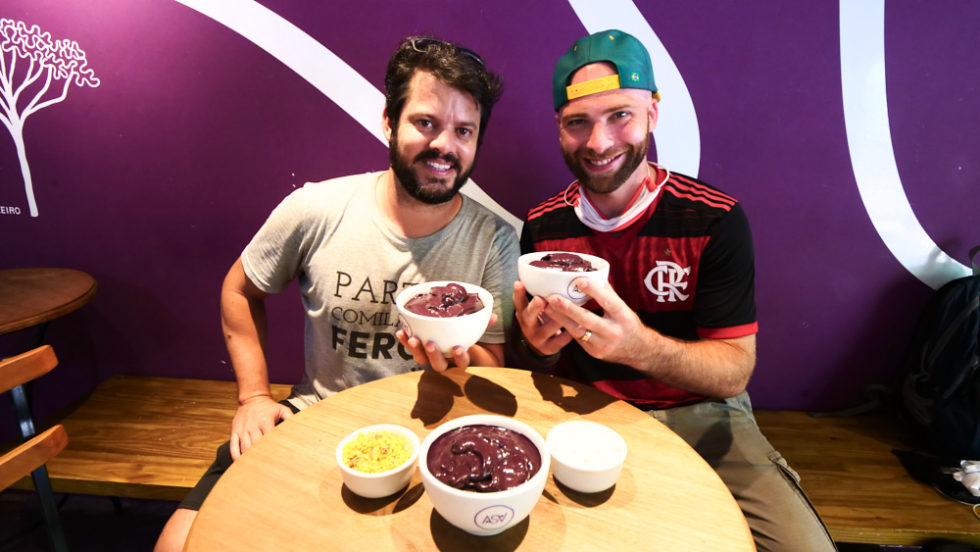
It sounds cliché, but my time in Rio de Janeiro really was a dream come true. I’d wanted to explore the city since I first started traveling. Despite hearing scary stories of violence and crime from others, I finally made it happen in December of 2020. What I found as I explored the city with my guides Guilherme and Rafa of Rio4Fun and Rio4Food blew my mind. Instead of crime, I found a complex city full of beautiful culture, mouthwatering food, and fascinating contradictions.

From the upscale, heavily-touristed beaches to the tight, claustrophobic alleys of the meager Rocinha favela, every step I took in Rio was a deeper look into a complicated and often misunderstood city. I had some of my favorite food experiences in months in the city. I also found myself in awe more times than I can count. These are the top things you must do in Rio de Janeiro, Brazil.

Everyone has heard of the Seven Wonders of the Ancient World. They include the pyramids of Giza, the Hanging Gardens of Babylon, and the Lighthouse of Alexandria. But did you know that, in 2007, the New Seven Wonders of the World were announced? These new wonders include the Taj Mahal, the Colosseum, the Great Wall of China, and Brazil’s most famous manmade landmark, Christ the Redeemer.

Towering majestically over the city atop Corcovado Mountain, this massive, 30-meter-tall soapstone statue of Jesus Christ stands on a 8-meter-high pedestal 700 meters above sea level. Built between 1922 and 1931, it’s a popular travel destination for Christian and non-Christian travelers.

You can reach the statue in several ways, including by train, by bike, by hiking, and by climbing. If you have the time, biking, hiking, or climbing are great ways to have a unique experience. But if time isn’t on your side, I suggest taking the van. Just follow the road up the mountain, through Tijuca Forest, to the pickup point at Barra da Tijuca. From there, the van will take you the rest of the way for 40 BRL, or roughly $7.70.

At the reception pickup point, you can buy tickets to Christ the Redeemer. My party of three spent 105 BRL, or about $20 USD, before riding the van up the rest of the way.

At the top of the mountain is a fantastic gift shop. There, you can buy T-shirts, hats, and miniature soapstone statues of Christ the Redeemer. The statues vary in size and price, and the biggest ones can cost up to $40 USD! They make great gifts for friends and family!

Also nearby is Bar e Restaurante Corcovado, a restaurant with an outdoor terrace in Christ the Redeemer’s shadow. There, you can enjoy decent (if not overpriced) food like grilled cheese sandwiches, and mango juice for a quick breakfast.

They also have beer, but in all honesty, the main draw is the stunning view over the city and ocean.

Christ the Redeemer opens at 7:40 a.m. I suggest visiting as early as possible on weekday mornings to avoid the biggest crowds. Keep in mind that Christ the Redeemer is the most popular tourist attraction in Brazil. You won’t be able to enjoy it by yourself. Crowds of varying sizes arrive throughout the day, but it gets most crowded in the late morning and early afternoon. Keep that in mind if you’re looking for photo opportunities!

Standing in the shadow of the gargantuan statue is an awe-inspiring experience that’s hard to put into words. Despite the number of people around me, I found the experience quite peaceful and calming.

Christ the Redeemer stands at the very top of Corcovado Mountain, where you can enjoy one of the best unobstructed views of Rio. The 360-degree views allow you to see everything from the bay and beaches, to the sprawling city spread out below. Visiting Christ the Redeemer is one of the top draws in Rio de Janeiro for the views alone!
Cristo Redentor
Parque Nacional da Tijuca
Alto da Boa Vista, Rio de Janeiro – RJ
Brazil
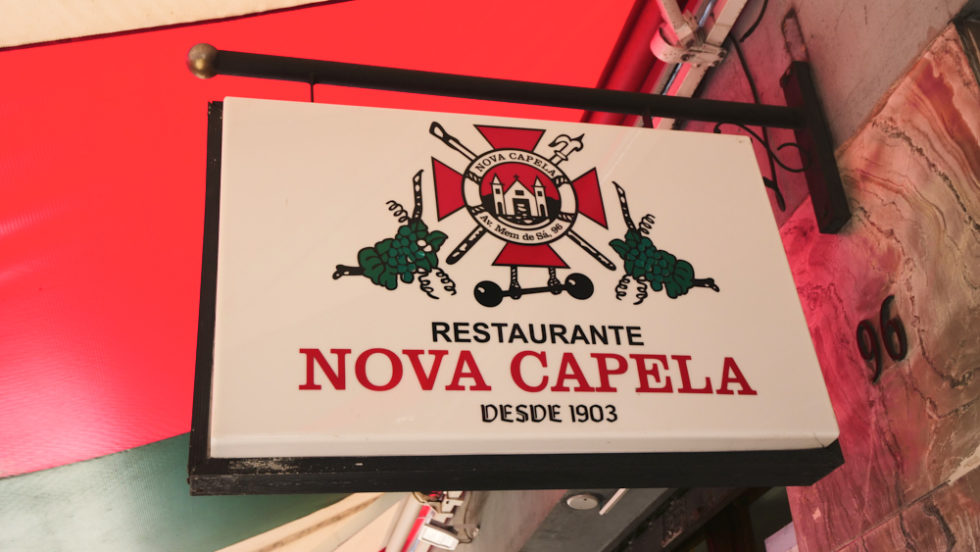
Something I didn’t eat a lot of in Brazil is lamb, which is one of my favorite meats. If you love good, quality lamb like I do, take a ride over to Nova Capela Bar e Restaurante. This Portuguese-style bar/restaurant dates back to 1903, making it one of Rio de Janeiro’s oldest restaurants. My guides told me that they make the best lamb in Rio de Janeiro!

There are a number of great side items you can order, including chunky bacalao (codfish) fritters, a greenish broccoli rice with fried garlic, and crispy fried potatoes. I suggest enjoying them with a Brahma Black, a creamy Brazilian stout with a bit of espresso flavor.

But the lamb is the main attraction here. The cooks roast it for four hours and then deep-fry it, making it ultra-tender and juicy on the inside, and crispy and golden brown on the outside. If your taste buds can handle the heat, try the lamb with their spicy chili sauce. If you’re less into spice, eat it with their potent mint jelly or by itself. Either way, it’s delicious!
Nova Capela Bar e Restaurante
Av. Mem de Sá, 96 – Centro
Rio de Janeiro – RJ, 20230-150
Brazil
+55 21 2252-6228

If you’re a beach bum, Rio de Janeiro is arguably one of the best travel destinations in South America. Its world-famous Copacabana Beach is a 5-kilometer-long stretch of sand lined by mid-rise buildings, similar to Barceloneta in Barcelona or even South Beach in Miami.
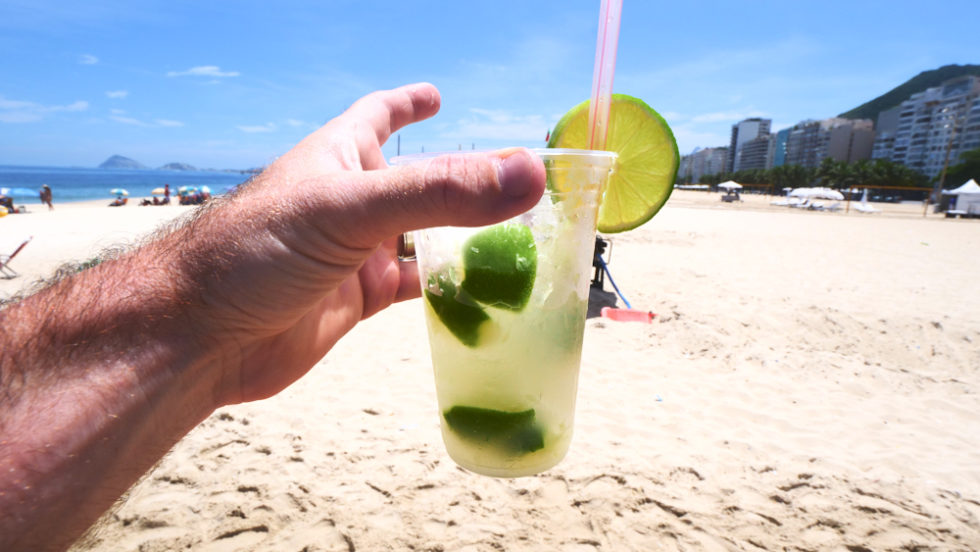
Along the beach, you’ll find a number of vendors and small cafés, including one selling caipirinha. Caipirinha is a traditional alcoholic drink made from sugarcane juice, lime, ice, and sugar. It’s very refreshing and is worth a trip to the beach even if you’re not planning on swimming.
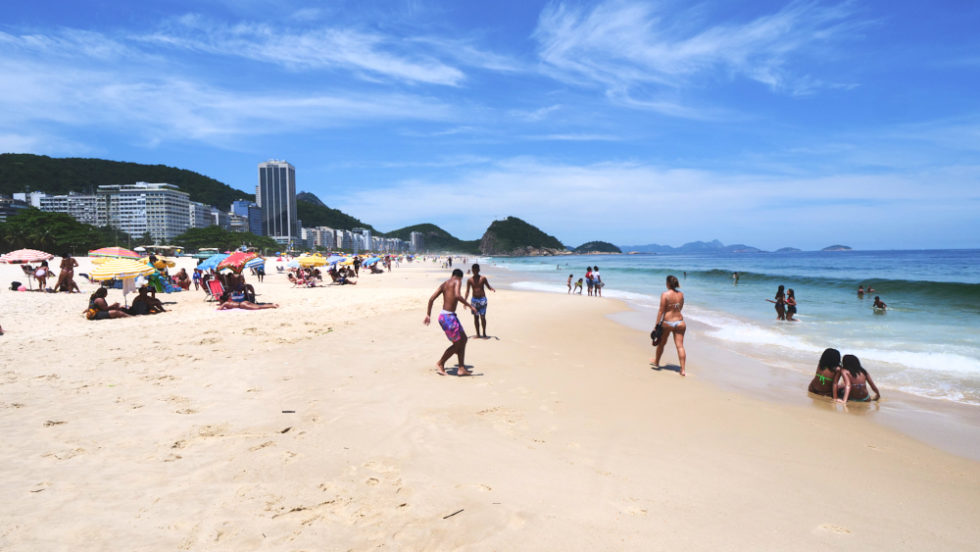
But of course, the main thing to do at Copacabana Beach is to go for a swim! The beach wasn’t particularly crowded on the December afternoon I visited, but it gets packed during the high season. It’s legendary for a reason, which is why it’s a must in Rio de Janeiro. Just don’t forget your suntan lotion!
Copacabana Beach
Copacabana, Rio de Janeiro
State of Rio de Janeiro
Brazil

The famous beach is part of a larger neighborhood called Copacabana Beach, where you’ll find a number of restaurants, hotels, and shops. It’s reminiscent of many European cities I’ve visited in the past, like Lisbon. But at night, the 24-hour area comes alive with a whole new energy as street food vendors set up their stalls!

The Copacabana Beach area never sleeps, so you can always find something to eat, no matter how late. You’ll find vendor selling a delicious chicken butt kebab topped with cassava flour called sambiquira, as well as sausages and grilled garlic bread.

With a bit of chili sauce, the sambiquira is stunningly good. It’s tender and tasty, but look out for small bones! Best of all, the kebabs are extremely affordable at less than $1.50 USD each!
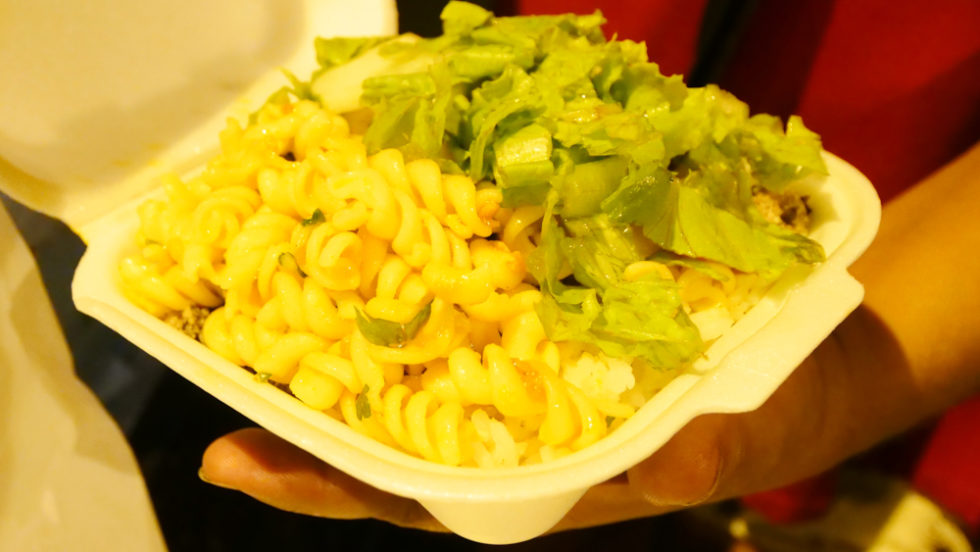
Elsewhere in the area are vendors offering pasta with rice, beans, bacon, sausage, cucumbers, onions, kale, cassava flour, and lettuce fused together in one dish. The al dente pasta with the bits of meat, crunchy vegetables, and fresh ingredients was mind-blowing.
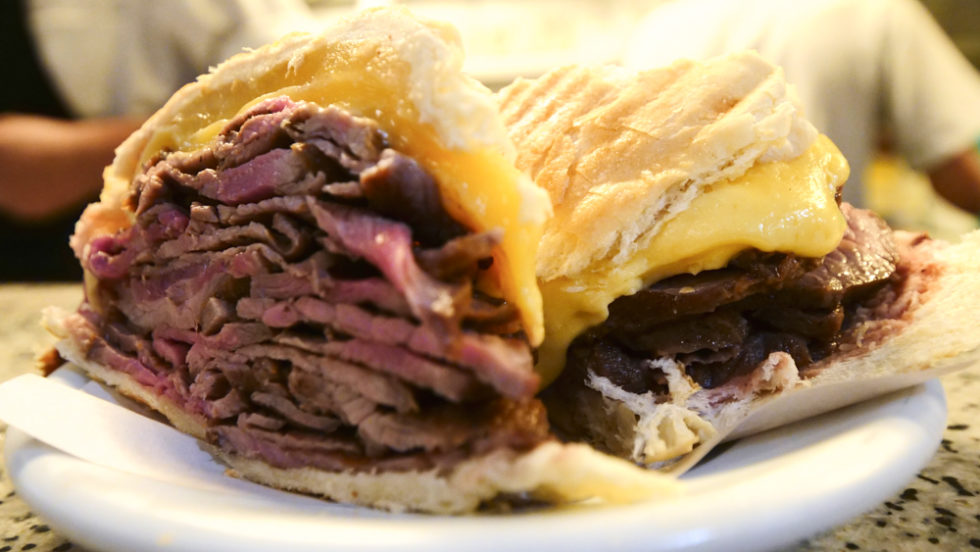
If you prefer sit-down restaurants, you can also find late-night eateries serving smoky roast beef sandwiches with cheese and pineapple. There are also exotic offerings like beef kidneys and brains with mole picante. At Galeto Sat’s, you can try hundreds of varieties of cachaça, chicken hearts with garlic sauce, and more!

Even if you live thousands of miles from the Amazon Rainforest, you’ve probably heard of açai. This little, purple berry that grows in the depths of the rainforest has been all the rage around the world for a while due to its antioxidant and superfood properties. Unfortunately, in the U.S., you can only get frozen and pasteurized açai, but at ASA Açai in Rio de Janeiro, Brazil, you can have the real thing, fresh from the jungle.

This colorful eatery looks a lot like a juice bar. My guides Guilherme and Rafa swear by it and say it’s one of their favorite spots in Rio, and after visiting it myself, I can see why.

Here, they blend pure, fresh açaí into a thick, creamy, purple paste. You can try it plain or have it mixed with honey or even topped with granola, nuts, and tapioca. As someone who loves fresh açaí —I got my first taste of fresh açaí in Suriname in 2019—I had to try as many as possible!

The plain açaí is really nice and tastes very healthy, but I loved the one mixed with honey. It added a nice sweetness that brought out the flavor of the berries. Adding granola to it gave it a nice crunch and a slightly nutty flavor. It’s the best açaí I’ve ever had in my life and one of my favorite things to do in Rio de Janeiro, Brazil.
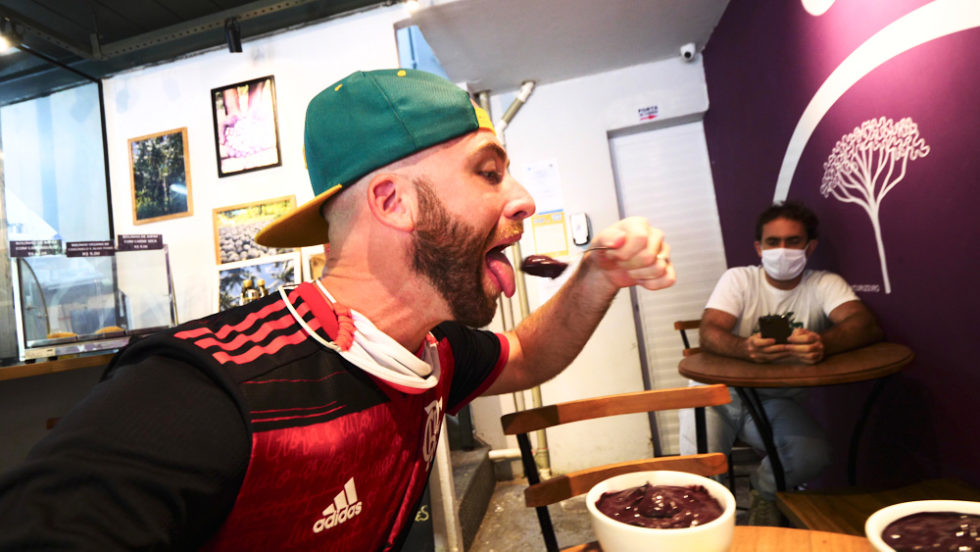
Even though it’s fruit, pureed açaí is very filling, so just remember that if you plan on eating something else later. It feels almost like a cross between yogurt and ice cream. It also stains your teeth and tongue purple, so you may want to brush your teeth afterward!
ASA Açai
R. Sacadura Cabral, 79
Saúde, Rio de Janeiro – RJ, 20081-261
Brazil
+55 21 98849-4541
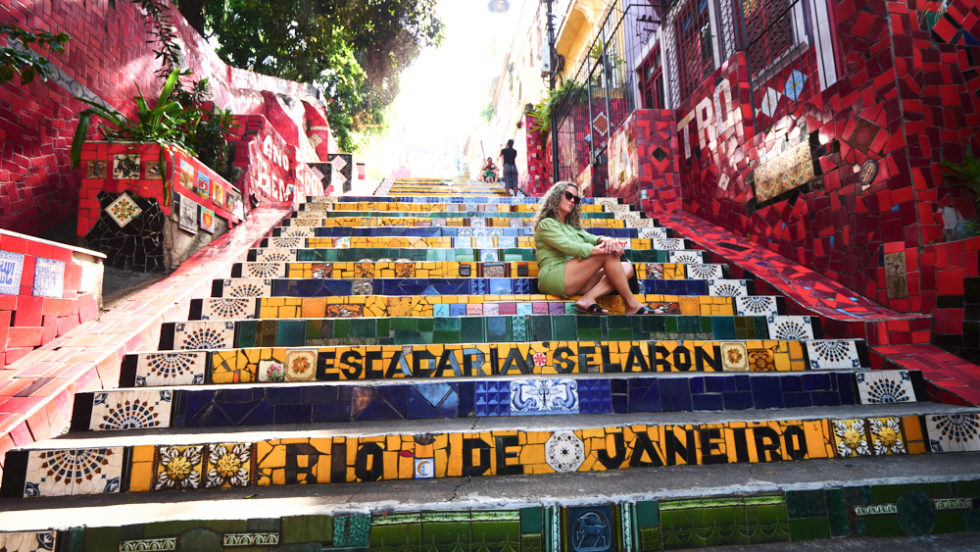
One of the first things that often come to mind when people think of Rio are the bright, vibrant colors often associated with the city. In the Santa Teresa neighborhood, not far from the Carioca Aqueduct, is arguably the city’s most colorful attraction, Escadaria Selarón.
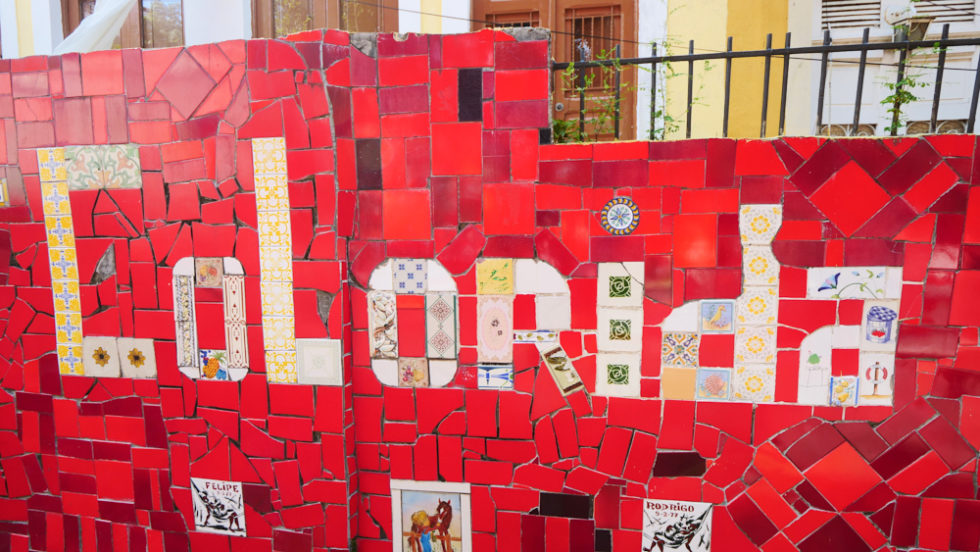
This attraction is a public, outdoor staircase that was decorated with vibrant, hand-painted tiles by a Chilean artist named Jorge Selarón. Selarón began decorating the stairway in 1990 as a gift to the city of Rio in the years leading up to the 1994 World Cup.
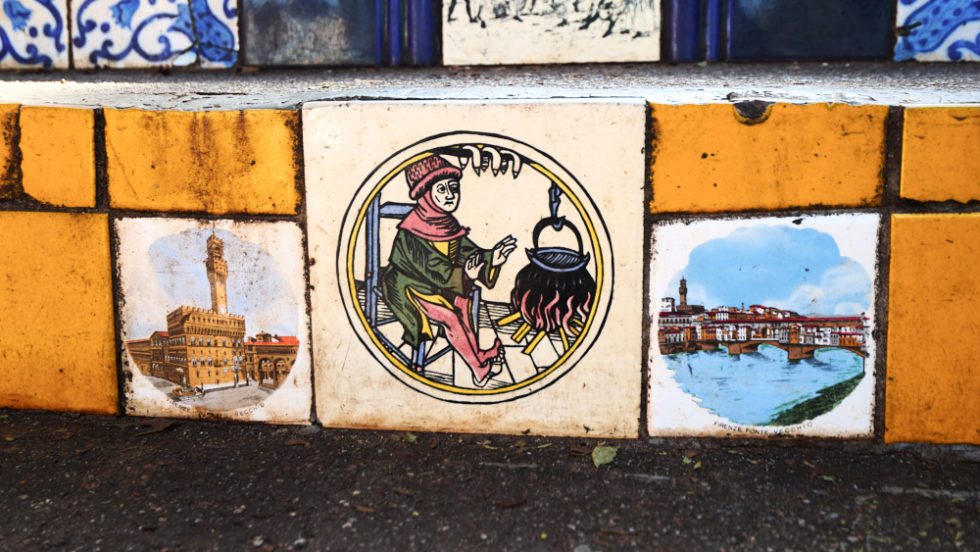
The walls and sides of the staircase are covered in rich, lustrous red tiles, as his favorite color is red! But the yellow, blue, and green tiles adorning the staircase itself have special meaning, as they’re the colors of the Brazilian flag.

Selarón used over 2,000 tiles from 60 countries in total. If you look closely at the tiles, you may be able to spot some that even depict places like Hollywood and Hawaii, and even brands like Coca Cola and Michelin! The site is also significant in pop culture, as it and several other local attractions were prominently featured in Snoop Dogg and Pharrell’s 2002 music video “Beautiful.”

Escadaria Selarón is Rio de Janeiro’s third-most visited attraction, so keep in mind that it can be quite crowded. But if you’re patient (and lucky), you may be able to snap some great photos there! Don’t forget to show some love to the street vendors, who sell things like handmade wooden keepsakes and a strong sugarcane liquor!
Escadaria Selarón
R. Manuel Carneiro – Santa Teresa
Rio de Janeiro – RJ, 20241-120
Brazil

You can’t visit Rio without stopping by one of its culinary landmarks, Academia da Cachaça. Like its name suggests, you can choose from an enormous selection of cachaça there, but they also offer a number of local favorites like caipirinhas and the dish we’re here for, feijoada.
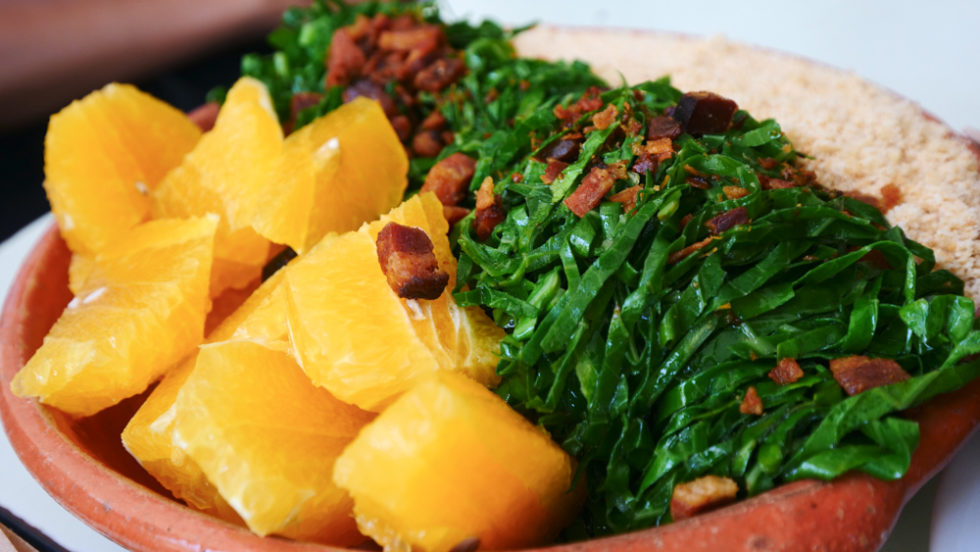
Feijoada is the national dish of Brazil, and has Portuguese, French, and African influences. It’s a mix of pork, black beans, sausage, kale, and cassava flour, and comes with rice and cubed oranges on the side. The dish is typically only served on Fridays and Saturdays.

The creamy beans, melt-in-your-mouth pork ribs, crunchy pork cracklings, and tender sausage make a thick, rich, and decadent mixture that immediately made me salivate from the very first bite. The shredded kale added a fresh crunchiness, and the oranges gave the dish a tropical, citrusy burst of flavor.

The feijoada portions at Academia da Cachaça are massive, and a party of four can eat there for about $30 USD. For such a tasty and filling dish—one of my favorites of my entire trip—it’s a steal! It’s easily one of the best things to do in Rio de Janeiro, Brazil.
Academia da Cachaça
Rua Conde de Bernadotte, 26
Leblon, Rio de Janeiro – RJ, 22430-200
Brazil
+55 21 2239-1542
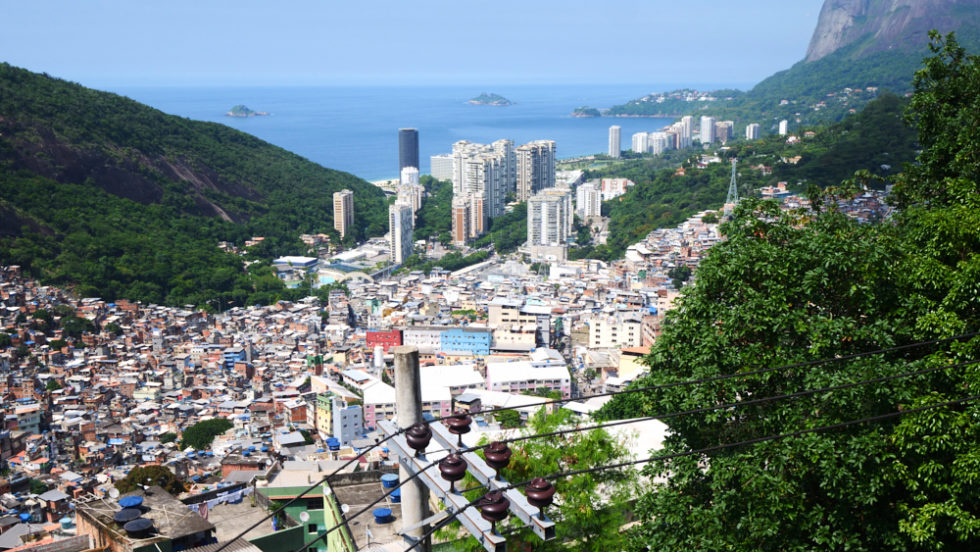
Anyone with even a passing knowledge of Brazil has likely heard the stories of violence that come out of the country, particularly the dense, highly populated neighborhoods known as favelas. I had heard nightmarish stories for years, warning me to never venture away from tourist spots. They told me to never go anywhere near a favela, which, they said, were crime-ridden and full of drugs and gangs. And then I visited one.

Rocinha, located in the south Zone of Rio de Janeiro, is Brazil’s largest favela. It’s a massive, sprawling community where many of Rio’s most underprivileged people live, and is home to approximately 100,000 residents. Rocinha is technically categorized as a favela barrio, or favela neighborhood, because it has more developed infrastructure than shanty towns and slums, and also is home to businesses, essential stores, transportation, banks, and more.

When our guide Guilherme Xuxa told me that he could safely take me into Rocinha, I was apprehensive at first. The stories people had long told me lingered in my mind. But as a world traveler who likes to have an open mind and experience destinations for myself, I knew I had to go. What I found was vastly different from what I had been told.

Yes, the signs of poverty are everywhere. But the thing I noticed the most, as we rode on motorbikes through Rocinha’s steep, winding streets, was how friendly the people were. An 89-year-old man invited us onto his roof at one point (for a $5 fee, which we gladly paid) to admire the magnificent views of the city and ocean.
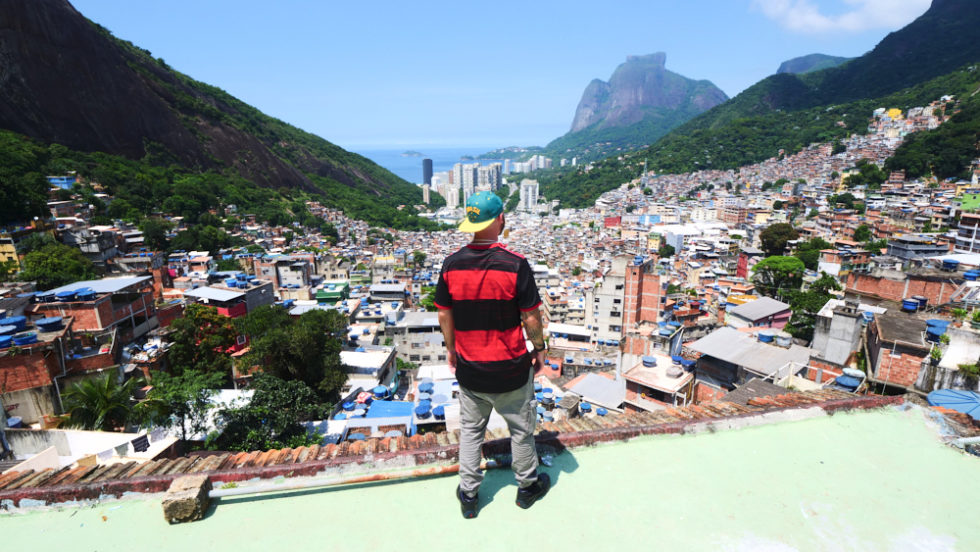
The maze-like grid of roads, tight alleyways, and narrow lanes are rife with hidden gems if you know where to look. Among them was a souvenir shop called Souvenir Rocinha, which sells everything from paintings by local artists to clothing to Christ the Redeemer statues. You can also find the favela’s first church, which dates back to 1940.

One thing I learned is that the homes here have access to basic electricity and sanitation, as evidenced from the tangle of power lines you’ll often see suspended overhead. The homes along the alleyways don’t have addresses, so any mail is left in a box at the alley’s entrance, which the residents sort through.
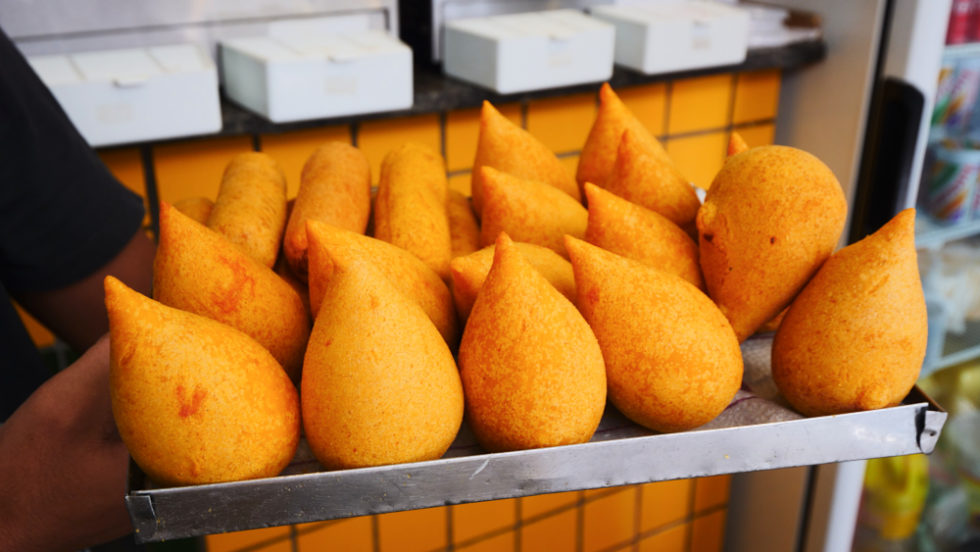
As a large local community, it’s no surprise that you’ll find lots of tasty dishes to try in Rocinha. During my visit, I tried a teardrop-shaped chicken croqueta at a bakery, as well as some juice made from guarana syrup.

Elsewhere, we met a man at a tiny eatery who makes a mouthwatering fried rice dish with beans, onions, garlic, tomatoes, cheese, sausage, and cilantro. It was fantastic on its own and tasted even better with a bit of hot sauce.
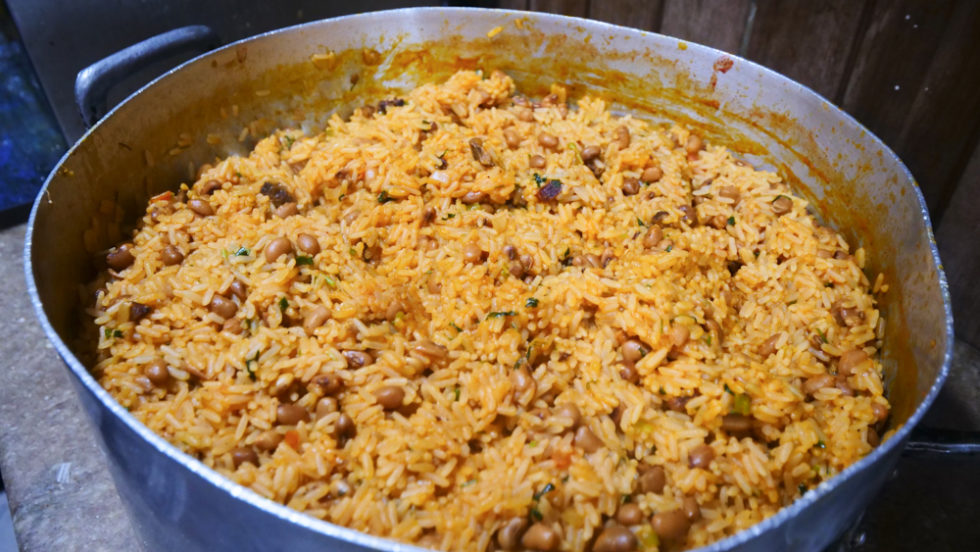
At the bottom of the favela, we even found a vendor selling fresh squeezed orange juice. At less than $0.60 for a glass, it’s an inexpensive way to keep cool on a hot, humid day! It was also a great way to end a truly eye-opening morning in Brazil’s most famous favela.
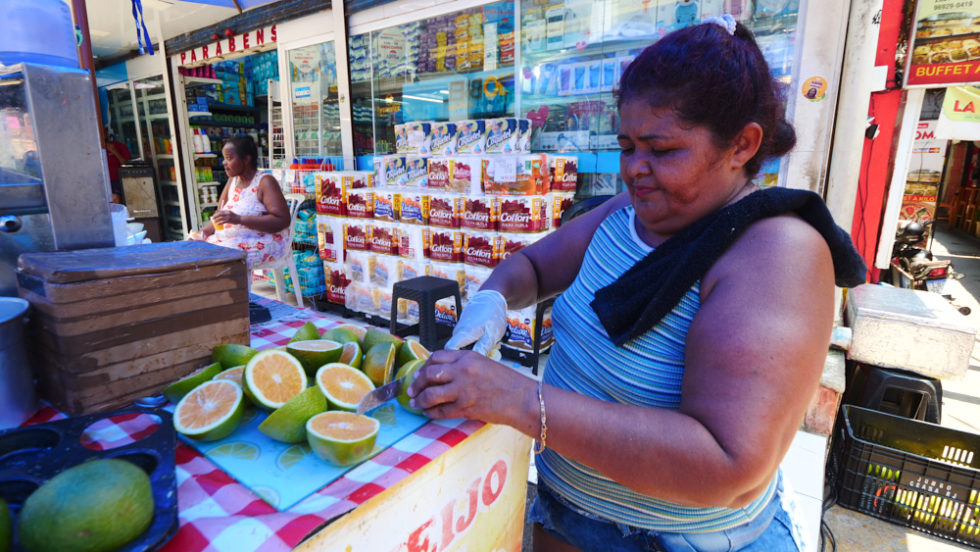
NOTE: While I never felt unsafe in Rocinha, it’s worth noting that favelas can be dangerous for foreigners. Because of that, I highly recommend that you use a trusted, knowledgeable guide who knows the neighborhood well. Please do not venture into a favela by yourself.
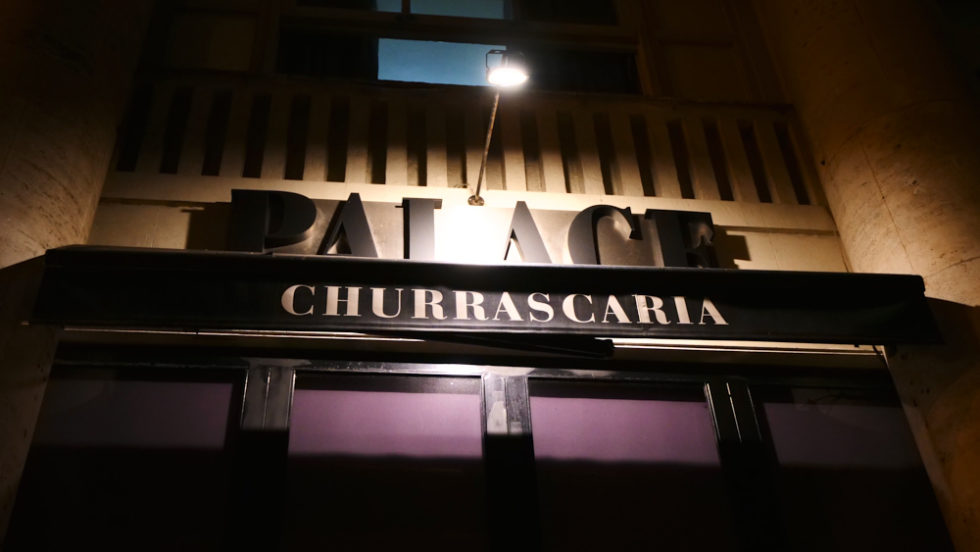
Steakhouses are a dime a dozen in Brazil, but if you want to eat some of the highest quality meat in town, head over to Churrascaria Palace. This steakhouse in the famed Copacabana Beach neighborhood dates back to 1951 and also offers dishes from all over the country.

Inside, you’ll find a mini bar and an atmospheric dining room with a mural of Bossa Nova musicians on the wall. It’s the perfect setting to enjoy premium cuts of meat like picanha, ancho, lamb ribs, and beef sashimi. In normal times, they also have a buffet, but due to the pandemic, it’s not set out. However, you can still order items from their buffet menu.
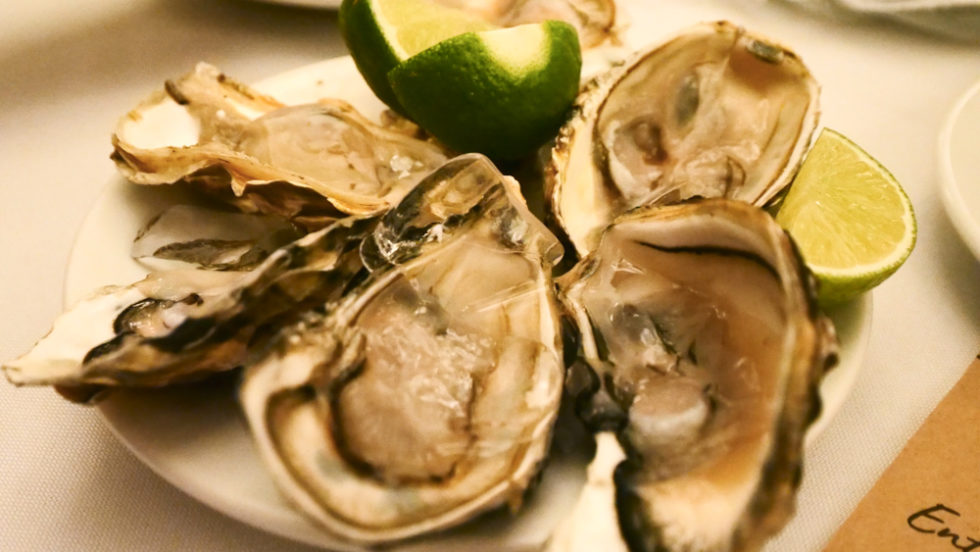
Churrascaria Palace is the type of place where you can easily spend two or three hours slowly grazing your way through plates of food, so I suggest starting off light and working your way up to the heavier meats.

I loved their oysters, which were as fresh as ever. They also serve some crunchy and moist hearts of palm, which are both refreshing and healthy!

As with most Brazilian steakhouses, the waiters come to your table with different cuts of meat, and you can let them know if you want some or not. As a lover of good meat, I suggest trying it all!

The picanha is medium rare and extremely juicy, as are their skirt steak and prime rib. I also must recommend their smoky sausages and tasty, local lamb chops. I can’t forget the leg of lamb, Uruguyan ancho steak, and beef ribs!

Just keep in mind that the meat is heavily salted, so you need to drink a lot of water with your meal to keep from getting dehydrated. To break up the salty meatiness, try some fried banana and end your meal with a dessert called lingua de gato. It’s made of chocolate bars, a scoop of vanilla ice cream, and chocolate syrup. It’s a chocoholic’s dream!
Churrascaria Palace
R. Rodolfo Dantas, 16 – Copacabana
Rio de Janeiro – RJ, 22020-040
Brazil
+55 21 2541-5898

Christ the Redeemer may get most of the glory, but there’s no doubt in my mind that the best place to get stunning views over Rio is the top of Sugarloaf Mountain. This 1,300-foot-tall mountain overlooks the entire city and is among its most popular attractions.

There are multiple ways to get to the top, including hiking and climbing, but the funicular is the fastest and safest. A ride on the funicular, which dates back to 1912, costs 120 BRL, or roughly $24 USD.
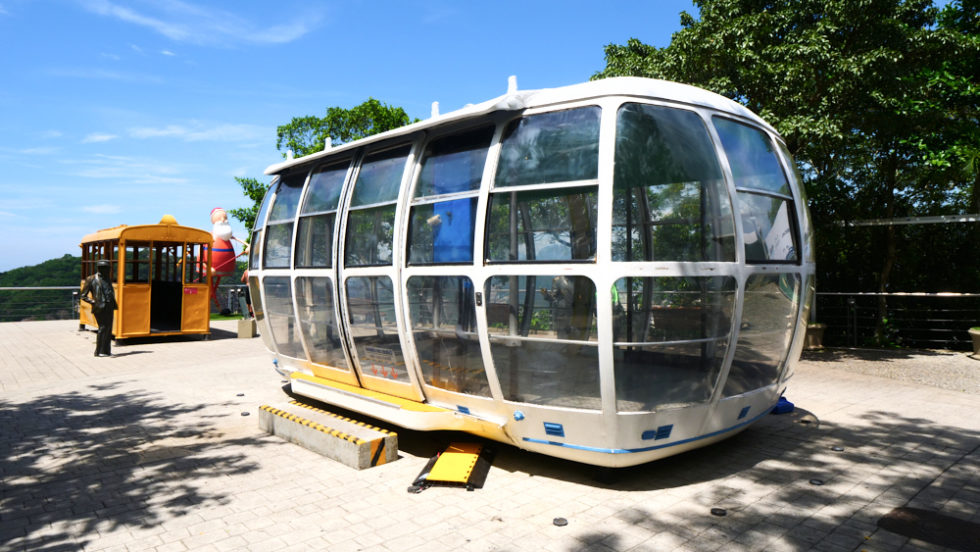
You’ll have to take two cable cars to get to the top. At the second station, roughly 220 meters above the ground, you can see the original German cable car from 1912 and the second-generation car from Italy. There’s also a store where you can buy snacks and Flamengo soccer jerseys.

At 220 meters above the city, the views are already stunning, but they get even better the higher you go. From the very top, you can enjoy stunning vistas of the tranquil blue waters and lush, green mountainsides below. It’s breathtaking!
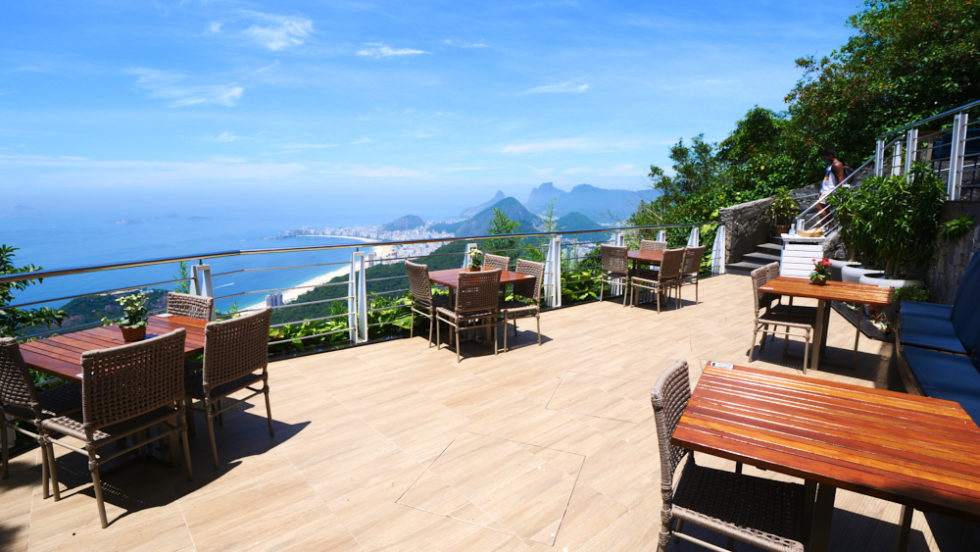
If you want to continue admiring the view while grabbing a bite to eat, head down to Classico Beach Club. This bar and restaurant on the mountain has an outdoor terrace where you can continue to enjoy the gorgeous views over Rio and the ocean.
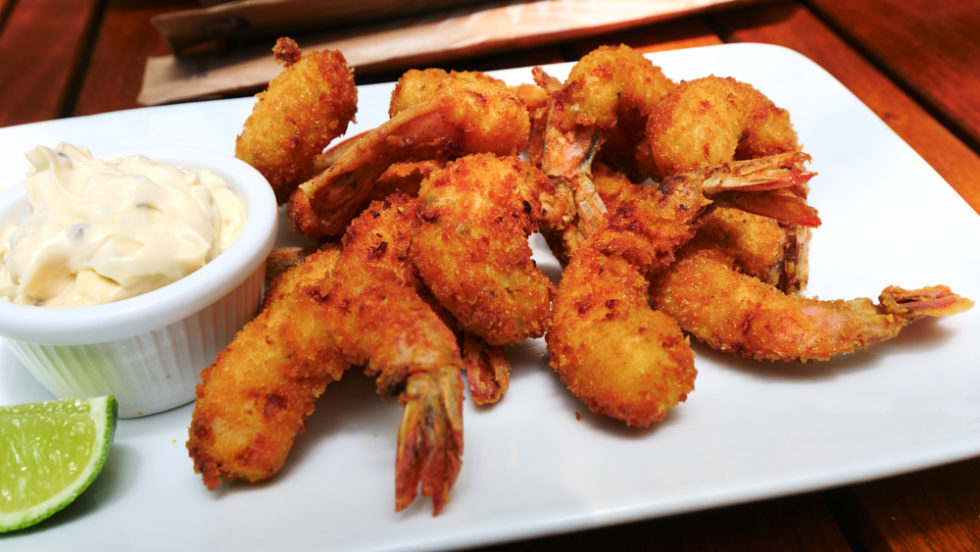
They sell a number of delicious-looking dishes, so I suggest trying whatever catches your eye. I went with their fried shrimp with lime and a creamy aioli, as well as a fantastic craft beer called Therezópolis Black.

The shrimp are large, crunchy, and golden brown, and the creamy aioli and lime further enhanced the flavor. But while they were tasty, they’re also expensive because the mountain is a tourist destination. If you’re on a tight budget, you may want to wait to eat until you’re back on the ground, but if not, kick back and enjoy the enjoy the view and eats!
Sugar Loaf Cable Car
Av. Pasteur, 520 – Urca
Rio de Janeiro – RJ, 22290-240
Brazil
+55 21 2546-8433

One of the best places to eat in the Copacabana Beach area is Galeto Sat’s, an old-school diner that sells tapas and lots of meaty dishes. It has a very family-friendly environment and is also a great spot to visit with a group of friends.

Arguably the tastiest item on their menu is their baked chicken, which they douse with a rich and citrusy garlic-onion-orange sauce. The sauce is tangy and potent, and the mix of the acidic oranges, garlic, and onions is a masterclass in balancing flavors.

Together with the herbs and chicken, it’s one of the best chicken dishes I’ve ever eaten! I truly believe it should be everyone’s list of things to do in Rio de Janeiro, Brazil. Wash it all down with some of their sweet and smooth cachaca!
Galeto Sat’s
R. Barata Ribeiro, 7 – Loja D
Copacabana, Rio de Janeiro – RJ, 22011-001
Brazil
+55 21 2275-6197

Facing Flamengo Beach and Sugarloaf Mountain in the picturesque Flamengo area is another of Rio’s top steakhouses, Assador Rio’s. The elegant, waterfront restaurant features a huge dining hall with a unique design and stunning architecture. It’s the perfect place to enjoy a heavy, meaty meal with friends or family!
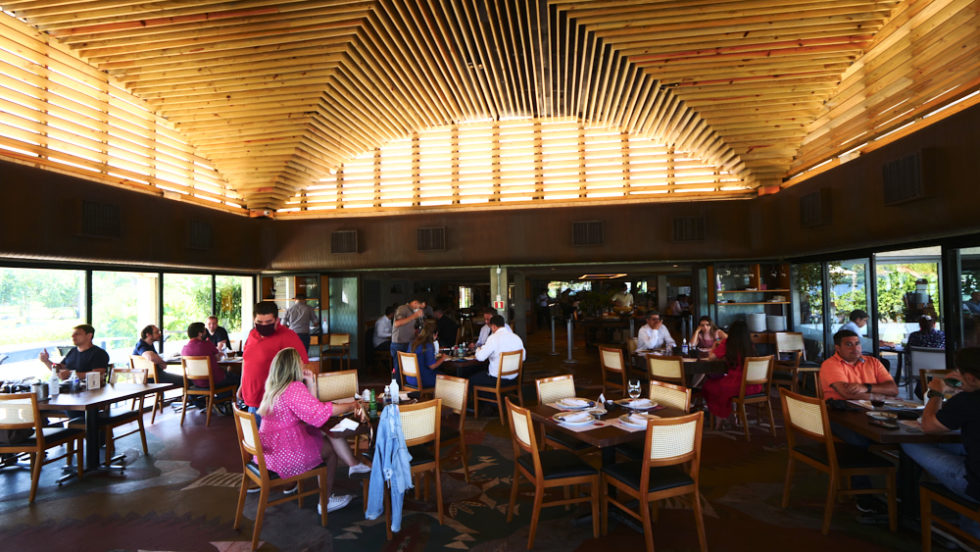
One of the great things about the restaurant is that they offer more than just Brazilian barbecue, as you’ll also find fish, sushi, and salads on their menu. And if you’re not familiar with the various cuts of meat, no worries. On their placemats is a diagram that shows the cuts of meat they recommend.
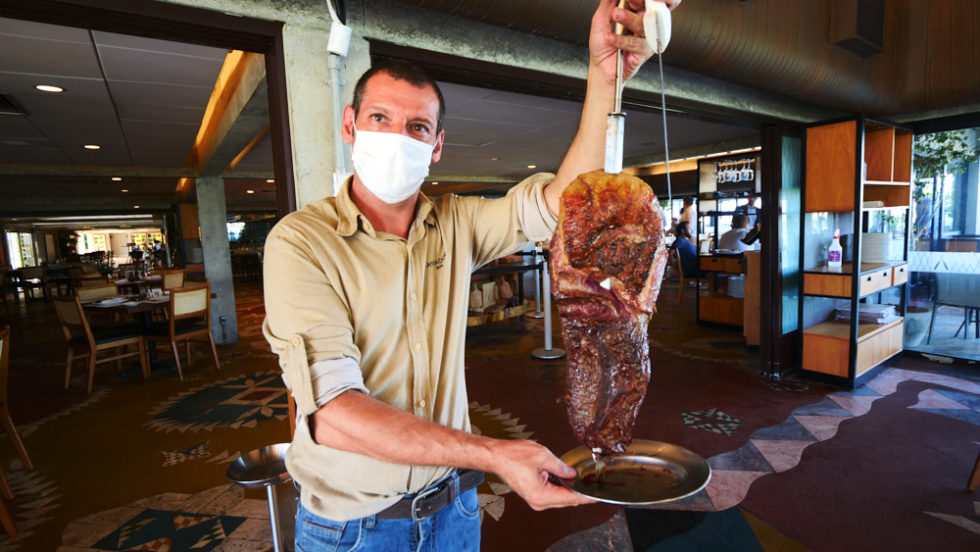
That includes their juicy flank steak, medium-rare tomahawk, and salty and thinly-cut picanha. If you’re more into lamb, you will lose your mind over their exquisite lamb chops.

I also can’t not mention their flank steak, their buttery ancho, crispy lechon, and gamy chicken hearts with cassava flour. The variety of meats made visiting Assador Rio’s one of my favorite things you can do in Rio de Janeiro, Brazil.

To cleanse your palate after such a salty and meat-rich meal, I suggest going with their amazing crème brulee. They have two varieties: a thick, Argentine-style dulce de leche and another that tasted like key lime pie. They’re both extraordinary!
Assador Rio’s
Av. Infante Dom Henrique, s/n
Flamengo, Rio de Janeiro – RJ, 20021-140
Brazil
+55 21 2018-3235

Located in the Lapa neighborhood in the center of Rio de Janeiro is one of the city’s most unique attractions, the Carioca Aqueduct. It was built in the mid-18th century as a way to supply the city with fresh water from the Carioca River. The aqueduct is characterized by its white color and double row of arches.

The aqueduct functioned until it was deactivated at the end of the 19th century. Today, the aqueduct still stands, and is known locally as Arcos da Lapa. Since its deactivation, it has served as a bridge for a tram that connects the city center with the Santa Teresa neighborhood.
Carioca Aqueduct
State of Rio de Janeiro
Lapa, Rio de Janeiro 20031-040
Brazil

If you’ve ever wanted to try a Brazilian take on a Vietnamese classic, head over to Tacacá do Norte. This small diner sells a local version of pho, the famous Vietnamese soup, that contains shrimp, manioc flour, tapioca gum, and greens.
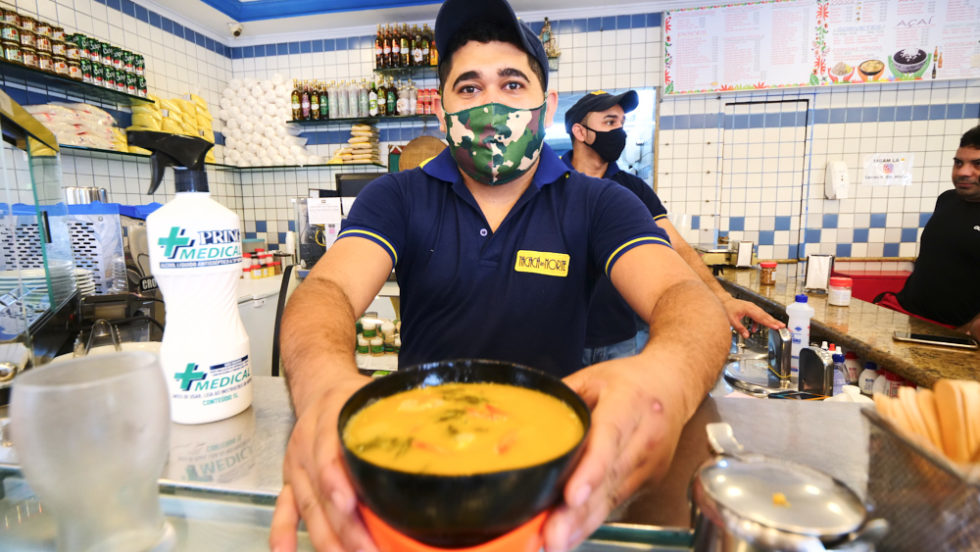
The broth has a very Vietnamese flavor, but there are also some clear Brazilian influences in the dish as well. It was fairly spicy and made my tongue and lips tingle, as if I had eaten a Szechuan pepper. You can always add more peppers if you want even more of a kick!
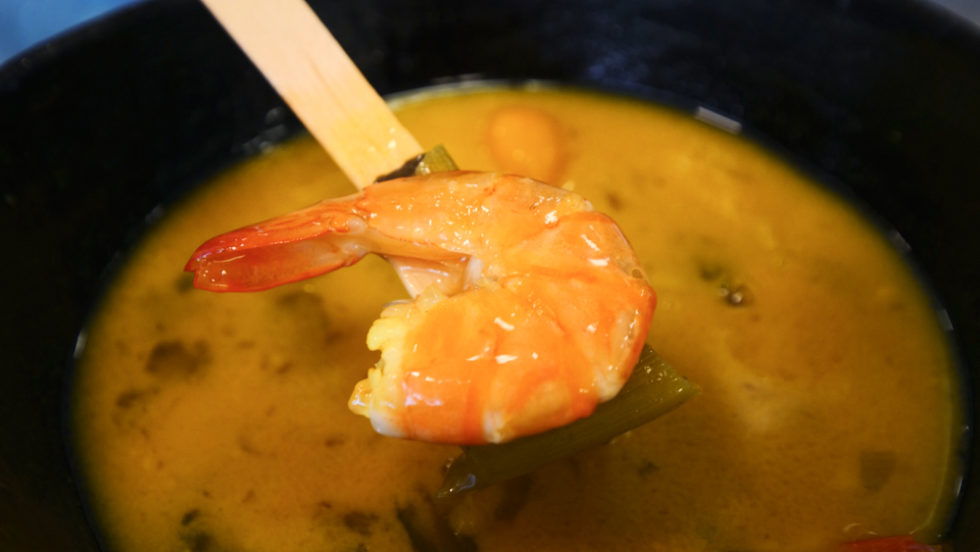
While you’re there, you can also have an açaí bowl or a craft beer. I suggest their Cerba export, which is a crisp lager with a nice, crafty taste. The beer and pho combination is hard to beat!
Tacacá do Norte
Rua Barão do Flamengo 35 R
Flamengo, Rio de Janeiro – RJ, 22220-080
Brazil
+55 21 2225-7329
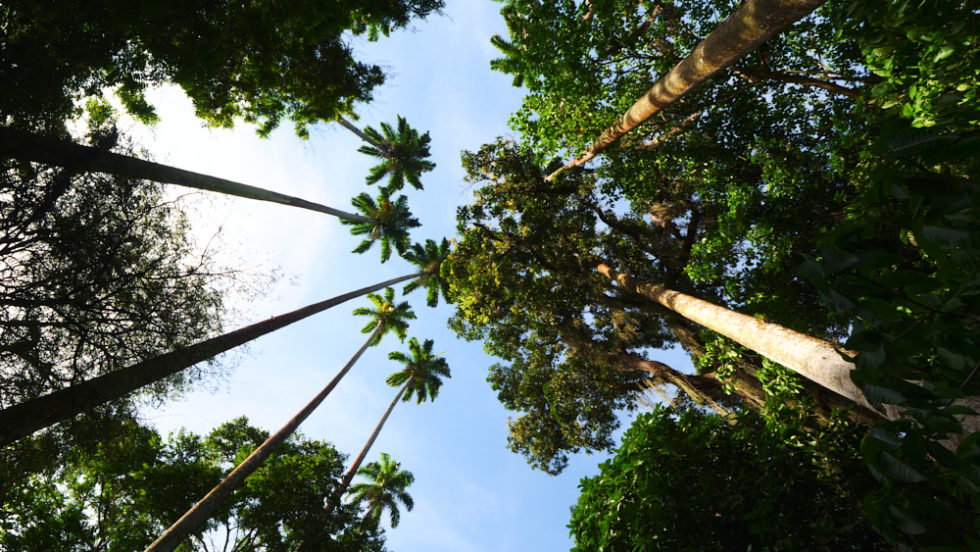
If you’re looking for a laid-back spot to just chill out and relax, try Jardim Botânico, also known as the Rio de Janeiro Botanical Garden. The garden dates back to 1808 and is known for its extensive collection of over 6,500 species of plants and its stunning landscapes.

Its greenhouses are home to plants from around the world, including orchids and carnivorous plants, while its Japanese Garden houses 65 species from Japan!

Near the garden’s entrance is a street food vendor selling dulce de leche churros. They’re the perfect snack to enjoy as you explore the grounds and take in the beauty around you.

Elsewhere in the garden, you’ll find 200-year-old imperial palm trees and jackfruit trees. Living among the trees are marmosets, which are an invasive species, but also incredibly cute. Check them out the next time you’re in Rio de Janeiro, Brazil!
Jardim Botânico do Rio de Janeiro
R. Jardim Botânico, 1008 – Jardim Botânico
Rio de Janeiro – RJ, 22460-030
Brazil
+55 21 3874-1808
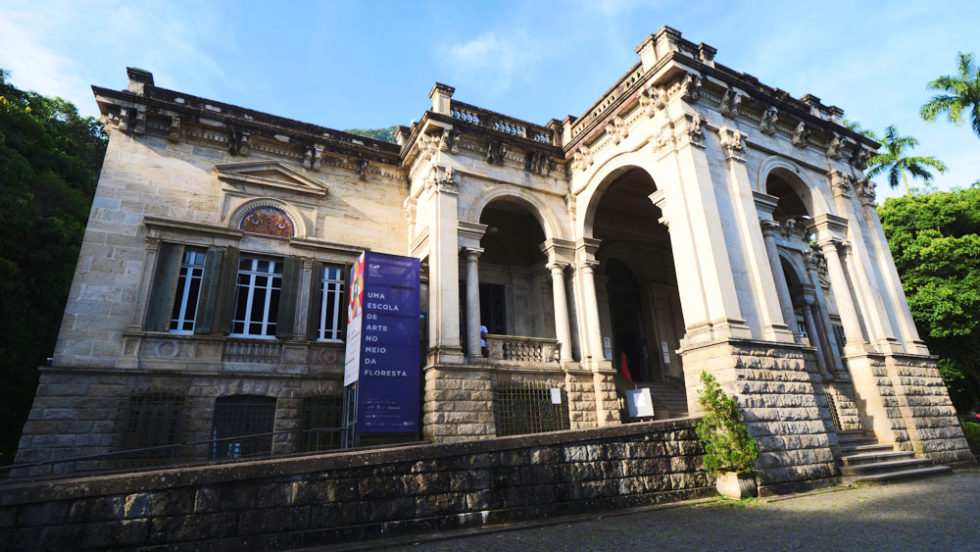
Next to the gardens is Parque Lage, a public park where you can find a lavish mansion that belonged to industrialist Henrique Lage. The mansion now houses a visual arts school and a café where you can enjoy a quick snack or a drink.

It lies almost directly in front of the distant Corcovado Mountain and reminded me of Alhambra Palace in Grenada, Spain! The café is very popular among tourists, so it may not be your cup of tea if you like more obscure, off-the-beaten-path sites. But for me, it’s definitely one of the top things to do in Rio de Janeiro, Brazil!
Parque Lage
R. Jardim Botânico, 414 – Jardim Botânico
Rio de Janeiro – RJ, 22461-000
Brazil
+55 21 2334-4088

There are many hotels just feet from the ocean at Copacabana and Ipanema Beaches, but if you’re looking for one that’s comfortable and centrally located, I suggest the Yoo2 Rio de Janeiro by Intercity. This designer boutique hotels is one of the top accommodations in Rio and has 143 rooms spread across 12 floors.

Located in the beautiful Botafogo neighborhood, the hotel’s soulful, avant-garde design makes it both trendy and comfortable. It also offers stunning views of Guanabara Bay and Sugarloaf Mountain. You can also enjoy its fantastic rooftop pool, terrace, and cabanas, which are the perfect place to enjoy one of Rio’s spectacular sunsets.

The hotel offers an onsite restaurant, a bar, laundry service, a fitness center, amenities by Granado, room service, free breakfasts, WiFi, and more. Guests can choose between six different room styles, from the modest Yoo2 Apartment to the lavish Celebration Suite. Accommodation-wise, it’s the best thing to do in Rio de Janeiro, Brazil!
Yoo2 Rio de Janeiro by Intercity
R . Praia de Botafogo, 242
Botafogo, Rio de Janeiro – RJ, 22250-040
Brazil
+55 21 3445-2000

On my way to the airport following my last food adventure in Rio de Janeiro, my friends and I made one final stop at a street food vendor by the side of a busy road. He was selling a local dish called acaraje, which blew my mind the moment I put it in my mouth.

Acaraje is basically a stuffed croqueta. It’s filled with shrimp, okra paste, pico de gallo, onion, coconut milk, and cilantro, among other spices and herbs. I was told it has both African and Indian influences, and I could definitely taste them in every bite. It’s remarkably flavorful, with a bit of a briny taste from the shrimp, but also a little spicy and creamy as well.

The croqueta itself has a nice, crispy exterior but is soft and fluffy on the inside. I’d honestly never had anything like it, but I devoured it within minutes. It’s one of my favorite snacks I had in Rio and only cost about $2 USD. I hadn’t heard of it before I tried it, but it needs to be on your list of things to do in Rio de Janeiro, Brazil!
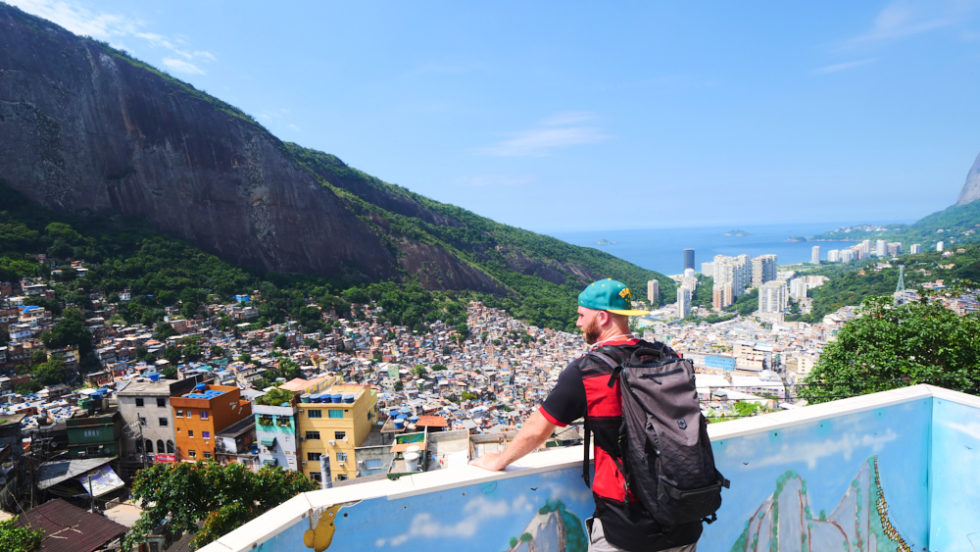
With so many diverse foods and experiences to offer, it’s no wonder Rio de Janeiro has captured the hearts and minds of travelers for decades. Whether you’re into lavish hotel experiences, beaches, parks, international landmarks, or beautiful gardens, you’ll find it all in Rio. Add in the food, which varies drastically in terms of international influences, flavors, and textures, and you’ve got a city you could explore for years. It’s one of my favorite travel destinations. Book a trip to Rio de Janeiro today to experience the top things to do in Rio de Janeiro, Brazil for yourself!
NOTE: If you need to check the visa requirements of a particular country, click here. To apply for a visa, find up-to-date visa information for different countries, and calculate the cost of a particular visa, click here!
Counter
101 Countries • 1432 Cities
Kevin | Caffeinated Excursions says:
Thanks for the link to my Copacabana post! I lived in Rio for more than half a year and hadn’t tried many of the restaurants you mentioned, so I obviously need to go back! Acarajé is one of my favorite Brazilian foods as well, and it originates from Bahia. If you get a chance, you should go up there!